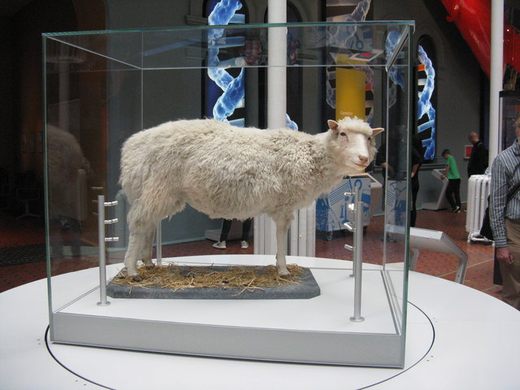The Cloning of Dolly the Sheep

On February 22, 1997, scientists at the Roslin Institute in Scotland announced the successful cloning of an adult sheep.
Dolly, the first cloned adult mammal, was created using somatic cell nuclear transfer (SCNT) from a 6-year-old ewe. The nucleus of an adult cell was inserted into an unfertilized egg cell with its nucleus removed, then stimulated to divide through electric shock and implanted into a surrogate.
Dolly was born on July 5, 1996, with three contributing mothers providing an egg, donated DNA, and carrying the cloned embryo. DNA tests confirmed her identical match to the donor and no relation to the surrogate.
The project team, including Ian Wilmut, Keith Campbell, Roslin Institute colleagues, and biotechnology company PPL Therapeutics, initially named her “6LL3” but later changed it to Dolly, as the donor cell was taken from a mammary gland, in homage to Dolly Parton.
The announcement sparked a debate on scientists interfering with the natural order, intensified when Dolly died prematurely in 2003, possibly due to premature aging. Euthanized on February 14 due to a progressive lung disease and severe arthritis, Dolly was preserved at the National Museum of Scotland.
The success of Dolly’s cloning paved the way for replicating other mammals like horses and cattle. Some scientists see potential in using cloning to preserve endangered species and produce lab animals.
In 2009, Spanish scientists cloned a wild mountain goat, declared extinct in 2000, though the clone died shortly after birth. This marked the first cloning attempt of an extinct animal.
Is this really a good idea? Specific species died out for specific reasons. Do we need to bring them back for more than just curosity? Where do we stop or draw the line?